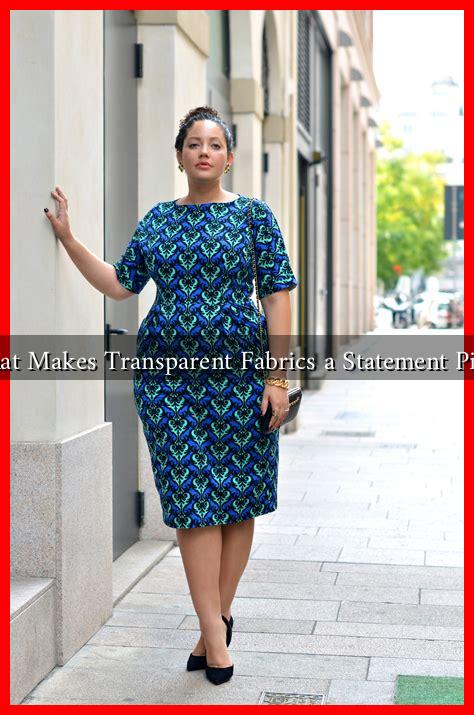-
Table of Contents
What Makes Transparent Fabrics a Statement Piece
In the ever-evolving world of fashion, trends come and go, but some materials stand out for their unique ability to transform an outfit into a statement piece. Transparent fabrics, with their ethereal quality and versatility, have emerged as a favorite among designers and fashion enthusiasts alike. This article explores the allure of transparent fabrics, their applications in fashion, and why they are considered a bold choice for making a statement.
The Allure of Transparency
Transparent fabrics, such as chiffon, organza, tulle, and lace, are characterized by their sheer quality, allowing light to pass through while offering a glimpse of what lies beneath. This unique feature creates an intriguing interplay between visibility and concealment, making them a popular choice for various garments. Here are some reasons why transparent fabrics are captivating:
- Layering Potential: Transparent fabrics can be layered over other materials, adding depth and dimension to an outfit.
- Versatility: They can be used in various styles, from casual wear to haute couture, making them suitable for different occasions.
- Feminine Appeal: The delicate nature of transparent fabrics often evokes a sense of femininity and grace.
- Bold Statements: When styled correctly, transparent fabrics can create daring looks that challenge traditional fashion norms.
Fashion Applications of Transparent Fabrics
Transparent fabrics have found their way into numerous fashion categories, from evening wear to everyday outfits. Here are some notable applications:
- Evening Gowns: Designers like Elie Saab and Marchesa often incorporate sheer fabrics into their evening gowns, creating stunning silhouettes that exude elegance.
- Streetwear: Brands like Off-White and Balenciaga have embraced transparent materials in their streetwear collections, offering a modern twist on casual attire.
- Layered Looks: Transparent tops or skirts can be layered over solid pieces, allowing for creative styling and personal expression.
- Accessories: Transparent fabrics are also used in accessories, such as bags and shoes, adding a unique touch to any outfit.
Case Studies: Designers Leading the Way
Several designers have made significant contributions to the popularity of transparent fabrics in fashion. Here are a few notable examples:
- Alexander McQueen: Known for his avant-garde designs, McQueen often used sheer fabrics to create dramatic and thought-provoking pieces that challenged conventional beauty standards.
- Chanel: The iconic fashion house has incorporated transparent elements into its collections, showcasing the timeless elegance of sheer fabrics in a modern context.
- Rihanna’s Savage X Fenty: The singer’s lingerie line features transparent fabrics that celebrate body positivity and inclusivity, making bold statements about beauty and self-acceptance.
Statistics and Trends
The rise of transparent fabrics in fashion is not just a fleeting trend; it reflects broader shifts in consumer preferences. According to a report by Statista, the global fashion market is projected to reach $2.25 trillion by 2025, with a growing demand for innovative materials. Transparent fabrics are increasingly favored for their ability to blend comfort with style, appealing to a generation that values both aesthetics and functionality.
Conclusion: The Future of Transparent Fabrics
Transparent fabrics have undoubtedly carved a niche for themselves in the fashion industry, serving as a canvas for creativity and self-expression. Their ability to create layered looks, evoke femininity, and challenge traditional fashion norms makes them a powerful statement piece. As designers continue to experiment with these materials, we can expect to see even more innovative uses of transparent fabrics in the future.
In summary, the allure of transparent fabrics lies in their versatility, layering potential, and bold aesthetic. Whether in high fashion or everyday wear, these materials have the power to transform an outfit into a statement piece that captures attention and sparks conversation.

